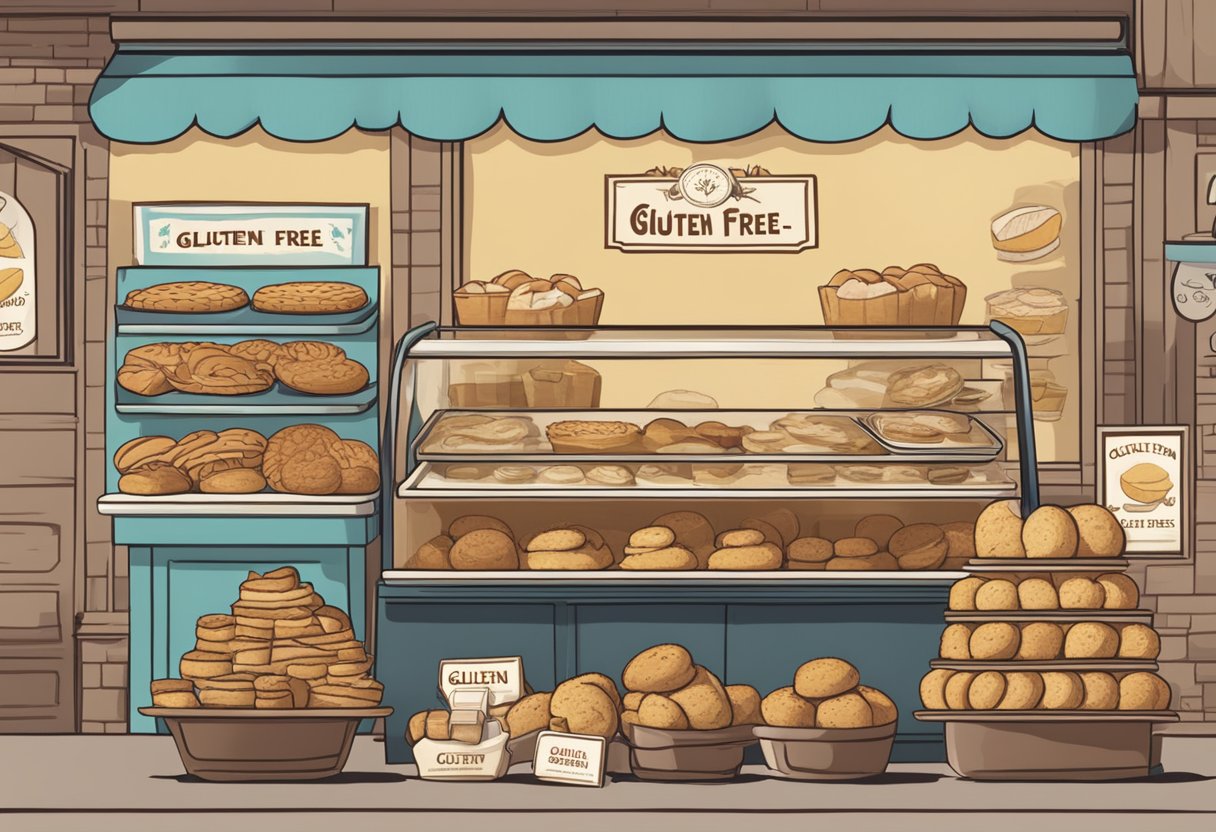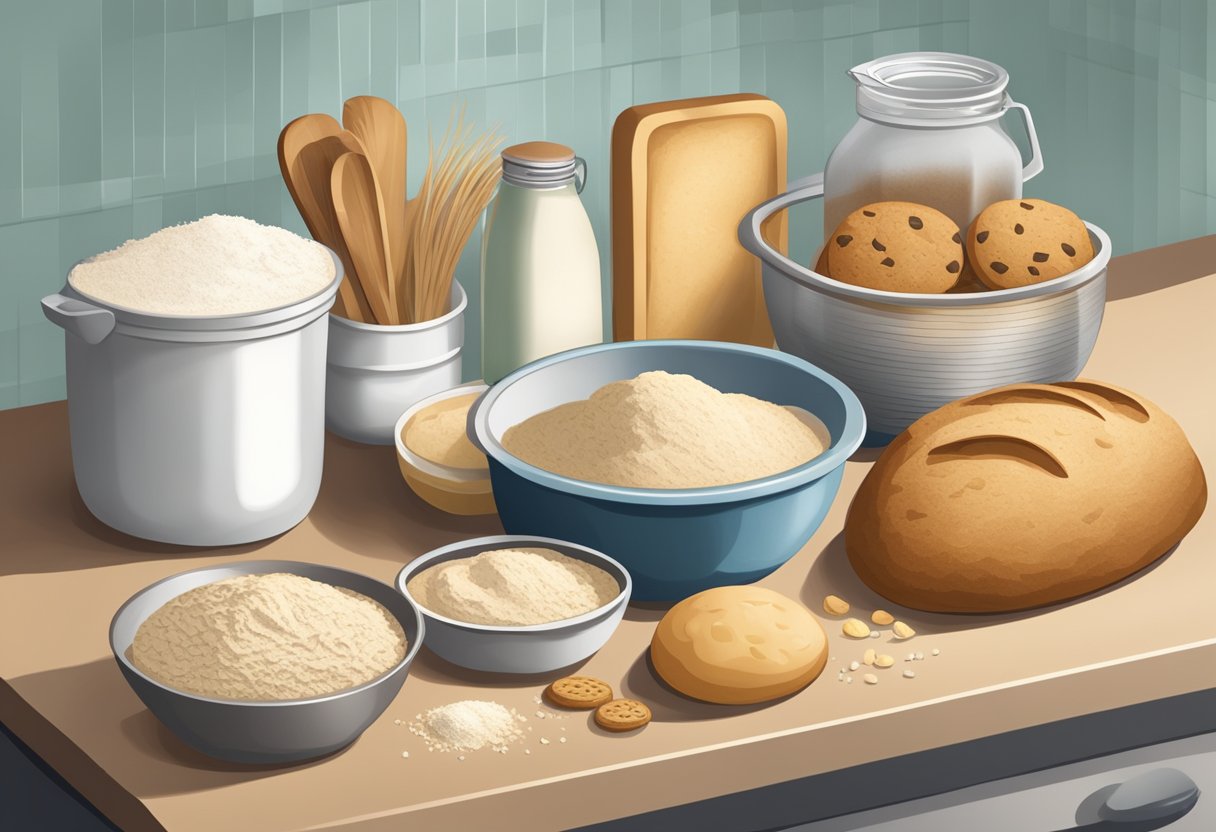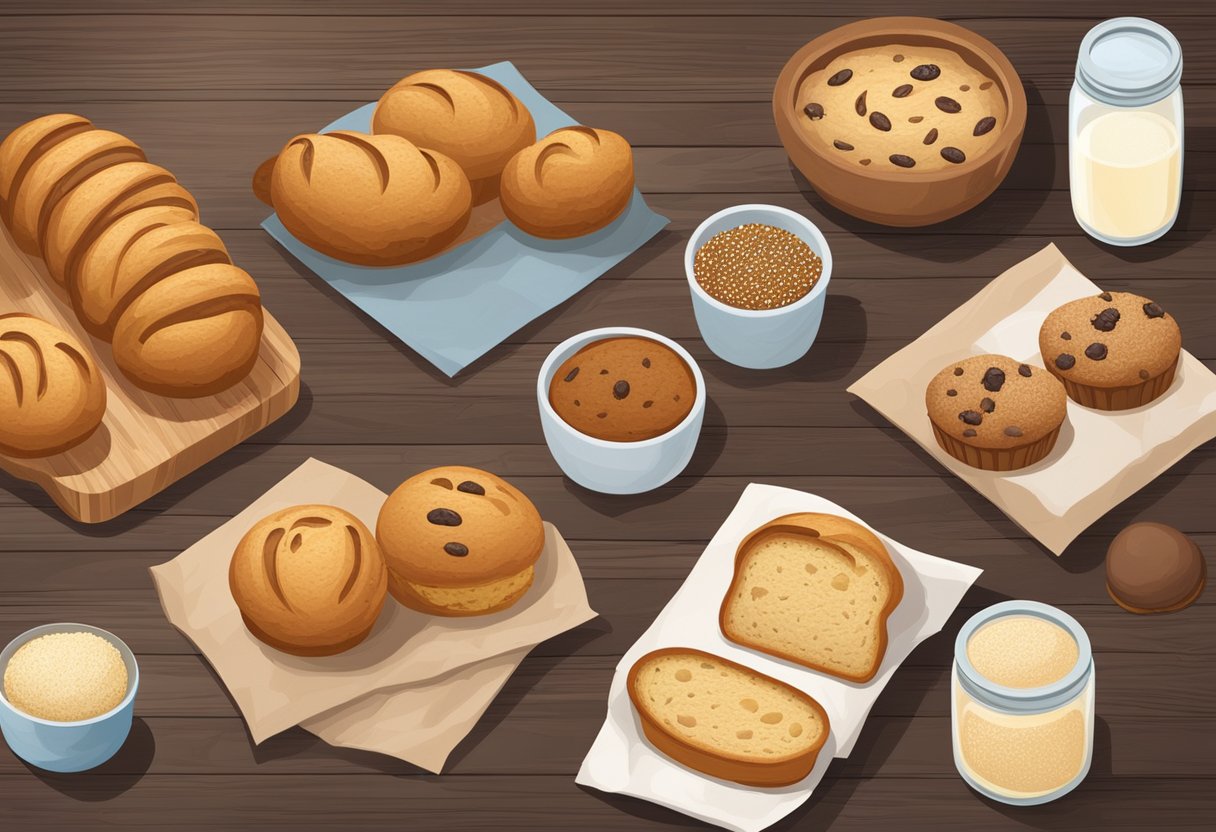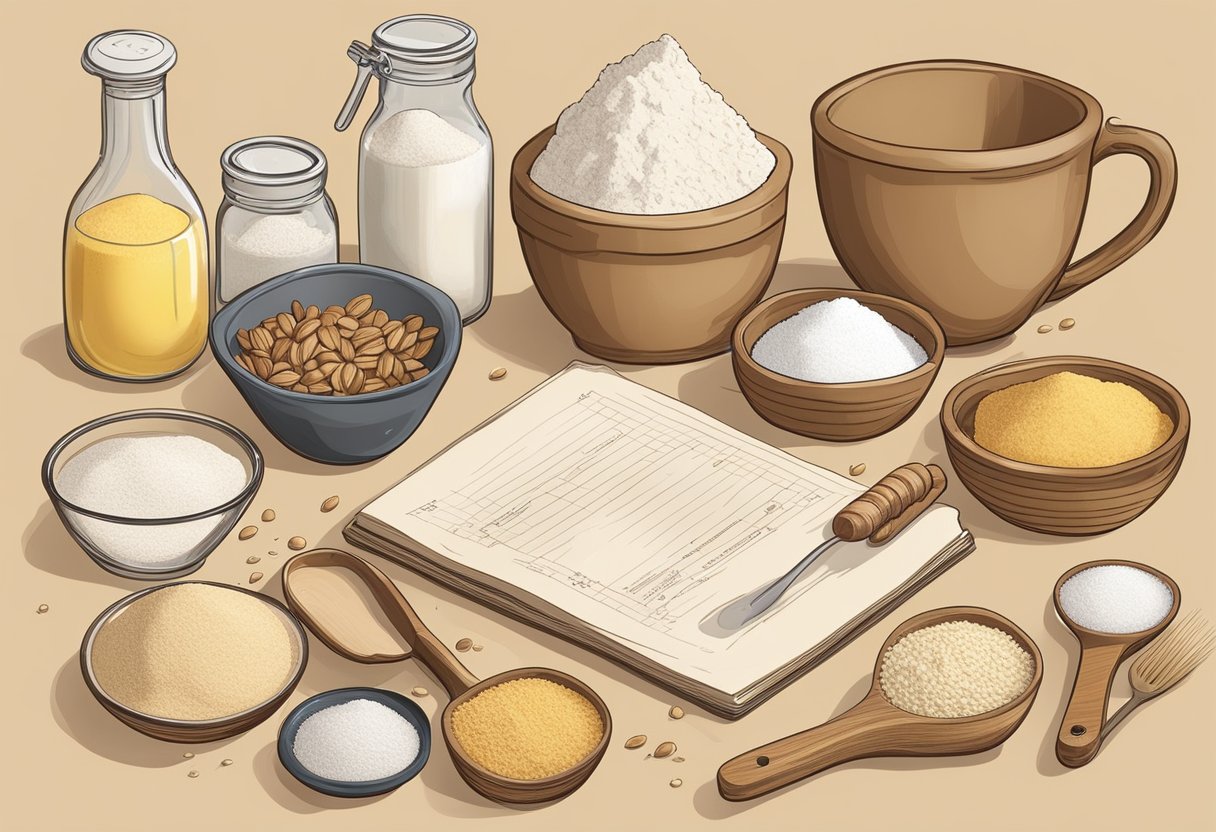Determining whether baked goods contain gluten is a crucial step for anyone with celiac disease, gluten sensitivity, or those choosing a gluten-free lifestyle for other health reasons. Gluten, a protein found in wheat, rye, and barley, is often synonymous with baked goods such as breads, pastries, and cakes.

For those adhering to a gluten-free diet, it’s essential to understand gluten’s role in baking and how to identify it in ingredients. Traditional baking relies heavily on gluten for structure and texture, making the avoidance of this protein a significant challenge. However, with the increase in gluten-free diets, there has been a rise in alternative baking techniques and recipes that create satisfactory products without the use of gluten.
- Key Takeaways
- Recognizing gluten’s presence in baked goods is critical for those with dietary restrictions.
- Ingredient labels should be scrutinized for hidden sources of gluten.
- Gluten-free baking employs various methods to replicate traditional textures and structures.
Table of Contents
Understanding Gluten in Baking

When it comes to identifying baked goods with gluten, comprehending how gluten functions in baking is crucial. This protein complex contributes to the texture and form of many common baked items.
The Role of Gluten
Gluten is the colloquial name for the proteins found in common grains like wheat, barley, and rye. It’s composed of two main proteins: glutenin and gliadin. Upon hydration and mechanical action, such as mixing or kneading, these proteins interact to form a network that imparts elasticity and toughness to the dough. This network is integral to the structure of many baked goods, giving them the ability to rise and maintain their shape.
Gluten-Containing Grains
The primary grains that contain gluten are:
- Wheat: The most prevalent and versatile gluten-containing grain in baking.
- Barley: Often used in baking for its distinctive malt flavor.
- Rye: Adds a dark color and strong flavor to bread and other baked goods.
These grains are foundational for a variety of traditional baked goods, contributing to their memorable textures and flavors.
Gluten’s Effects on Baked Good’s Texture
The presence of gluten greatly affects the texture of baked goods. The development of gluten’s network within the dough is a balancing act—too little results in a crumbly product, while too much leads to excessive chewiness or toughness. Depending on the desired texture, bakers control the amount of manipulation to achieve the optimum gluten development:
- Bread typically requires extensive kneading for a chewy, strong crumb.
- Cake benefits from minimal gluten development, favoring tenderness over chewiness.
- Pastry dough aims for flakiness, which is achieved by limiting gluten formation through techniques like lamination.
Understanding gluten’s role is fundamental for bakers to master various textures and ensure that each baked good expresses the desired qualities.
Identifying Gluten in Ingredients
When purchasing baked goods or scrutinizing baking ingredients, it’s crucial for individuals following a gluten-free Mediterranean diet to be aware of both obvious and hidden sources of gluten. Becoming proficient in label reading is a vital skill.
Common Sources of Gluten
Gluten, a protein complex found in certain grains, is a common component in traditional baking. Wheat flour, which includes all-purpose flour, is a staple in baking and a prevalent source of gluten. Other grains like barley and rye also contain gluten. Bran, often used to increase fiber content in baked products, is another gluten-containing ingredient.
- Wheat Flour: Appears as whole wheat, enriched, or all-purpose in labels.
- Barley: Can be found as pearl barley, barley flour, or barley malt.
- Rye: Commonly used in pumpernickel and other dark breads.
- Bran: Derived from the hard outer layers of cereal grains.
Gluten Hidden in Additives
Unsuspecting sources of gluten can be found in additives used as thickeners, stabilizers, or flavor enhancers. For those on a gluten-free diet, recognizing ingredients like malt, which is derived from barley, or brown rice syrup, which can sometimes be produced using barley enzymes, is essential.
- Malt: Used in flavoring and as a sweetener, may appear on labels as malt flavoring, malt syrup, or malt extract.
- Brown Rice Syrup: Might be processed with barley enzymes; look for certified gluten-free labels to be safe.
Reading Labels for Gluten
They must meticulously scrutinize food labels to identify gluten, focusing primarily on the ingredients section. Legislation often requires allergens like wheat to be clearly identified, but it’s not always as clear-cut for gluten, particularly when it comes to derivatives and synonyms that may not be as recognizable.
- Ingredients List: Look for wheat, barley, rye, or derivatives like malt.
- Allergen Statement: A separate section that often lists wheat but may not cover all gluten sources.
- Certified Gluten-Free: Seals indicating the product has been tested and certified to be free of gluten.
Basics of Gluten-Free Baking

Embarking on gluten-free baking can be both a necessity and an adventure for those following a Mediterranean diet. It requires an understanding of alternative flour options and how they work together to create delicious baked goods without the presence of gluten.
Choosing Gluten-Free Flours
In gluten-free baking, traditional wheat flours are replaced by a variety of gluten-free options. Rice flour is a common base in Mediterranean cuisine and pairs well with savory flavors. Buckwheat is not related to wheat and is an excellent choice for pancakes and pasta. Oat flour bakes well in cookies and quick bread while tapioca flour is used often for its binding properties and chewy texture. Each flour brings a unique quality to the table, influencing both the flavor and structure of the baked good.
Understanding Gluten-Free Flour Blends
A single gluten-free flour often cannot replicate the properties of wheat flour. Therefore, blends are essential. A typical blend may combine rice flour for neutrality, potato starch for moisture retention, and tapioca flour for elasticity, creating a balance that closely mimics the behavior of gluten-containing flours. These blends are carefully measured to ensure the right ratio for textural integrity and flavor appropriate for a Mediterranean diet palate.
Binders in Gluten-Free Baking
Without gluten, gluten-free baked goods can fall apart easily. Binders like xanthan gum are crucial in gluten-free recipes. They replace gluten’s structural role, holding moisture and providing the stickiness that binds ingredients together. Typically, only a small amount is needed to achieve desired results, ensuring the final product has the necessary cohesion and texture.
By understanding these foundations, baking without gluten becomes less daunting and more approachable, particularly for those who enjoy the rich flavors and wholesome ingredients typical of Mediterranean cuisine.
Techniques for Gluten-Free Baking

Baking without gluten presents unique challenges; careful alterations to recipes and baking methods ensure successful gluten-free baked goods. These techniques focus on maintaining the desired taste and texture found in traditional Mediterranean dietary staples, without compromising their inherent qualities.
Altering Traditional Recipes
For those enjoying a gluten-free Mediterranean diet, adapting beloved recipes starts with selecting the right flour. A mix of gluten-free flours often yields a better texture than using a single type. Combining almond flour, rice flour, and tapioca starch, for instance, can mimic the properties of traditional wheat flour. Increased moisture is also essential; adding an extra egg or oil can help retain the characteristic moistness of Mediterranean pastries.
Working with Gluten-Free Dough
Gluten-free doughs lack the elasticity of their wheat-based counterparts, making kneading less necessary. Instead, bakers should focus on proper hydration, as it helps with the rise and final texture of the dough. Allowing the dough to rest is crucial—it gives the starches time to properly absorb the liquid, leading to improved consistency and flavor in the finished product.
Adjusting Baking Times and Temperatures
Monitoring and controlling baking times and temperatures is imperative when preparing gluten-free versions of Mediterranean bread and pastries. Recipes may require a lower temperature and a longer baking time to fully set without becoming dry. Utilizing a scale for precise measuring, and avoiding overmixing are important to prevent the densification of gluten-free goods. Bakers should rely on specific visual cues and use an oven thermometer for accuracy.
Creating Structure and Texture
The creation of structure and texture in gluten-free Mediterranean baked goods hinges largely on alternatives to traditional wheat flour. Eggs, fats, and careful moisture management play pivotal roles in mimicking the qualities that gluten typically provides.
Role of Eggs in Gluten-Free Recipes
Eggs are instrumental in gluten-free baking, particularly for adding structure to baked goods. The proteins in eggs coagulate when heated, providing a necessary framework that would otherwise be offered by gluten. In the context of a Mediterranean diet, which favors plant-based meals, eggs serve as a crucial binder and can create a tender crumb in cakes and breads without relying on gluten.
Incorporating Fats for Tenderness
Fats such as olive oil or butter are prevalent in Mediterranean cuisine and lend tenderness and flavor to gluten-free baked items. Olive oil, in particular, contributes to a moist and tender bite, while still supporting the intended structure. Butter, used sparingly in a Mediterranean diet, can impart a richness to pastries, helping achieve a delicate and flaky texture.
Managing Moisture and Mix-Ins
Proper moisture balance is essential for achieving the right texture in gluten-free baked goods. A Mediterranean approach might use milk or water judiciously to avoid a dense or crumbly finish. Ingredients that hold moisture, like certain syrups or purees, can also be incorporated to maintain a chewy texture. Add-ins like nuts or seeds are commonly used to add variety in texture while aligning with Mediterranean dietary preferences.
Gluten-Free Recipes and Techniques
When preparing gluten-free baked goods, one must focus on alternative flours and binders to emulate the textures and flavors typically provided by gluten. Understanding the properties of these substitutes is crucial for successful gluten-free baking.
Cakes and Muffins
Gluten-free cakes and muffins often rely on a blend of rice, almond, and coconut flours to achieve the desired consistency. Xanthan gum or psyllium husk can be used as binders to prevent crumbly textures. Incorporating olive oil instead of butter not only caters to the Mediterranean diet but also adds moisture to these baked treats. Popular additions like lemon zest and figs align with Mediterranean flavors and can enhance the taste profile.
Breads and Rolls
For gluten-free breads and rolls, using a mix of sorghum, tapioca, and chickpea flours offers a nutritious base that compliments a Mediterranean diet. Essential in creating a bread that rises properly, bakers often use active dry yeast with a touch of sugar to activate it. Flaxseeds or sunflower seeds can be incorporated to add a hearty texture and nutty flavor, which are staple characteristics in Mediterranean breads.
Cookies and Pastries
Cookies and pastries can be challenging in gluten-free baking, as they usually require the elasticity that gluten provides. To counteract this, precise measurements of cornstarch or potato starch are essential. Opting for naturally gluten-free sweeteners like honey or incorporating popular Mediterranean elements such as dates, almonds, and orange blossom water into recipes not only achieves the desired sweetness but also adheres to the regional taste palette.
Lifestyle and Dietary Considerations
Adhering to a gluten-free diet requires careful consideration of ingredients and food preparation methods, particularly for individuals with celiac disease.
Navigating a Gluten-Free Diet
To follow a gluten-free Mediterranean diet effectively, one must prioritize naturally gluten-free foods such as fruits, vegetables, legumes, nuts, seeds, fish, and poultry. These items should be fresh, as some processed alternatives could contain gluten additives. Individuals must also familiarize themselves with gluten-free grains like quinoa, millet, and rice to maintain dietary variety without compromising on health.
Cross-Contamination Risks
Cross-contamination poses a significant risk for those on a strict gluten-free diet. Even trace amounts of gluten can trigger adverse reactions. It’s crucial to use separate utensils, cutting boards, and surfaces when preparing gluten-free meals. Additionally, storing gluten-free ingredients in the refrigerator and freezer should be done in sealed containers away from products containing gluten to mitigate any risk of cross-contact.
Baking for Celiac Disease
When baking for someone with celiac disease, it is paramount to use strictly gluten-free ingredients. Beyond replacing wheat flour with gluten-free alternatives, one should also ensure that thickeners and leavening agents are gluten-free. Checking labels becomes second nature to avoid inadvertently introducing gluten into baked goods. Regularly cleaning appliances and surfaces is essential to prevent cross-contamination, maintaining a safe kitchen environment for those requiring a gluten-free diet.
Frequently Asked Questions

When one is discerning the gluten content in baked items, certain key factors play a crucial role, including the ingredients used and the final product’s texture. These aspects are central to identifying whether a product suits a gluten-free Mediterranean diet.
What are common indications that a baked item contains gluten?
Typically, baked goods such as breads, pastries, and pizzas have a distinct chewiness and structure that gluten imparts. If an item has a stretchy dough or a springy crumb, it likely contains gluten.
Which ingredients should I look out for on labels to identify hidden gluten?
Ingredients such as wheat, barley, rye, malt, brewer’s yeast, and oats processed in facilities that handle gluten-containing grains should be avoided. Be vigilant about terms like “starches,” “hydrolyzed protein,” and “natural flavoring,” which can sometimes contain hidden gluten.
In terms of texture, how is gluten presence reflected in baked goods?
Gluten provides elasticity and strength, resulting in a chewy texture and a significant rise in breads and cakes. Gluten-free items may lack these characteristics, often requiring alternative binders and leavening agents.
Can you list unexpected products that may contain gluten?
One may find gluten in products like soy sauce, salad dressings, condiments, and even some meat substitutes, which are not typically associated with baking but might be included in the ingredients of a Mediterranean meal.
How can one identify if a product is truly gluten-free?
A product is considered gluten-free if it contains less than 20 ppm of gluten. Look for certifications from recognized gluten-free organizations and check if the packaging clearly states ‘gluten-free’.
Are there any specific grains or flours to avoid when seeking gluten-free baked goods?
When aiming for gluten-free baked goods, avoid wheat, barley, rye, and their derivatives like bulgur and farro. Instead, choose alternatives like almond flour, coconut flour, and gluten-free oats for baking needs within a Mediterranean diet.



